

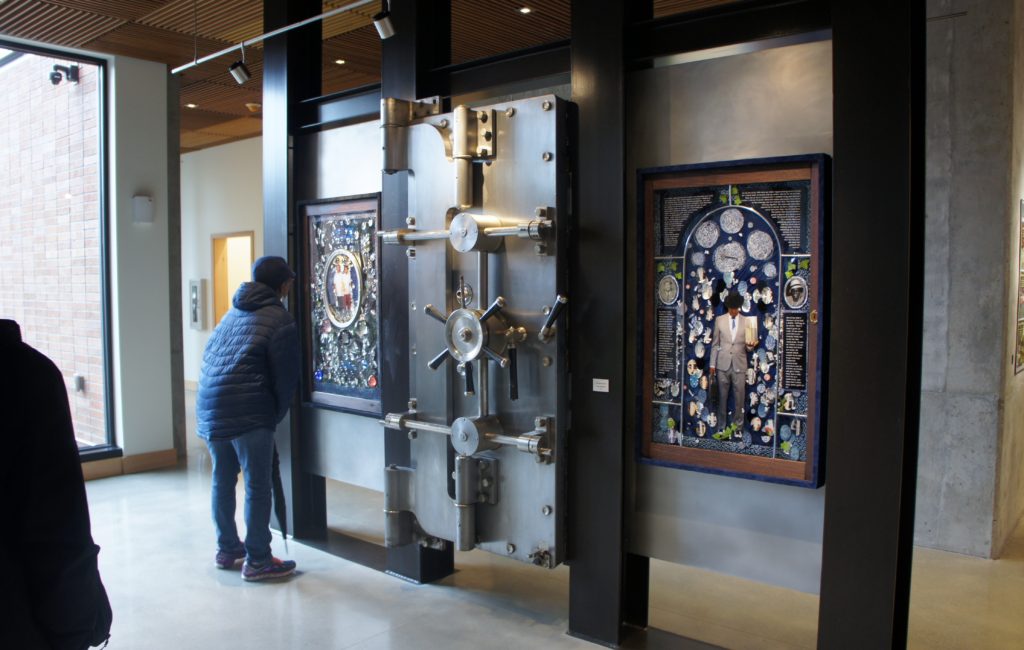
Inye Wokoma’s four mixed media art works inside the Liberty Bank Building lobby will be visible only to those who live there. So I am taking this opportunity to introduce these four intricate art works. Inye gave me an overview of their significance. The wall on which they are installed has two sides.
On the side you see is The Infinite Earth on the left and The Black Earth on the right.
On the other side of the wall is The Red Earth and The Green Earth. I have primarily quoted Inye’s articulate explanations here.
“It is a story of transformation and transcendence in four chapters based on the central metaphor of making barren land that fertile. Through this metaphor I am exploring the systemic racism African American faced upon migrating to Seattle in the 20th century, how we as a people confronted those challenges to build a community and the role Liberty Bank played in that story. “
“The visual motif references both Christian and Ifa spiritual traditions as a way to acknowledging the depth and complexity of our collective story as a people of the African Diaspora. I am both drawing from and expanding on these traditions by anchoring the imagery with deific figures that are rooted in the Central District daily life and mythical at the same time. “
Each piece has a story and together they comprise the larger story of the African American experience both coming from the South and living in the Central District.
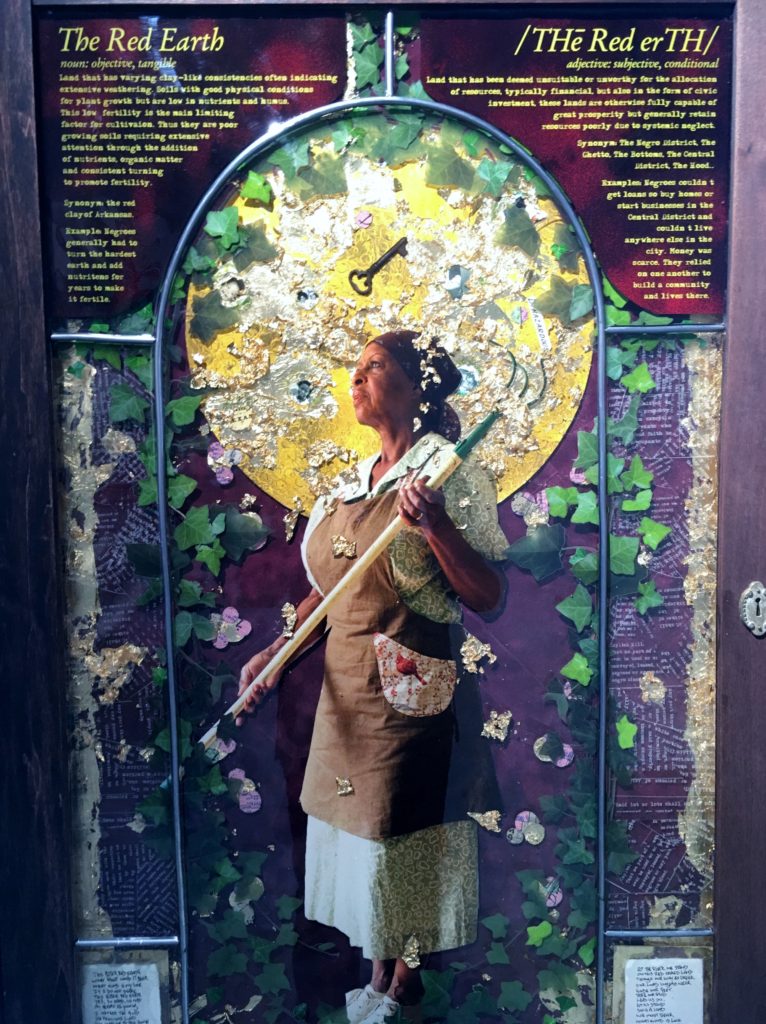
The first part of the story is The Red Earth which he explained as the red clay earth of Alabama, for example. It is difficult to work , and low in nutrients making it low in fertility. He parallels this with the area of the city that was lacking in civic investment, and systematic neglect, as in the “Negro District, the Ghetto, the Bottoms, the Central District, the Hood” which created the difficulties of building community.
We see a woman who is both a maid and a farmworker holding a fork. Around her head is a huge halo, in the center of which we see a key, the key to a home, a home that is only a dream because loans for homes were not available in the Central District until the Liberty Bank was founded in 1968. She is both an Orisha of the Sankofa religion and a deity in Christianity, this strong black woman.
“The Red Earth – Rooted in our collective history of confronting housing discrimination and redlining, this panel connects this history with the agrarian lives many of our left behind in the south by paralleling working poor soil with building community under economic deprivation. The Red Earth is a visual metaphor for what it meant to build community with intentionality under the harshest circumstances. It establishes the conditions that made institutions like Liberty Bank necessary”
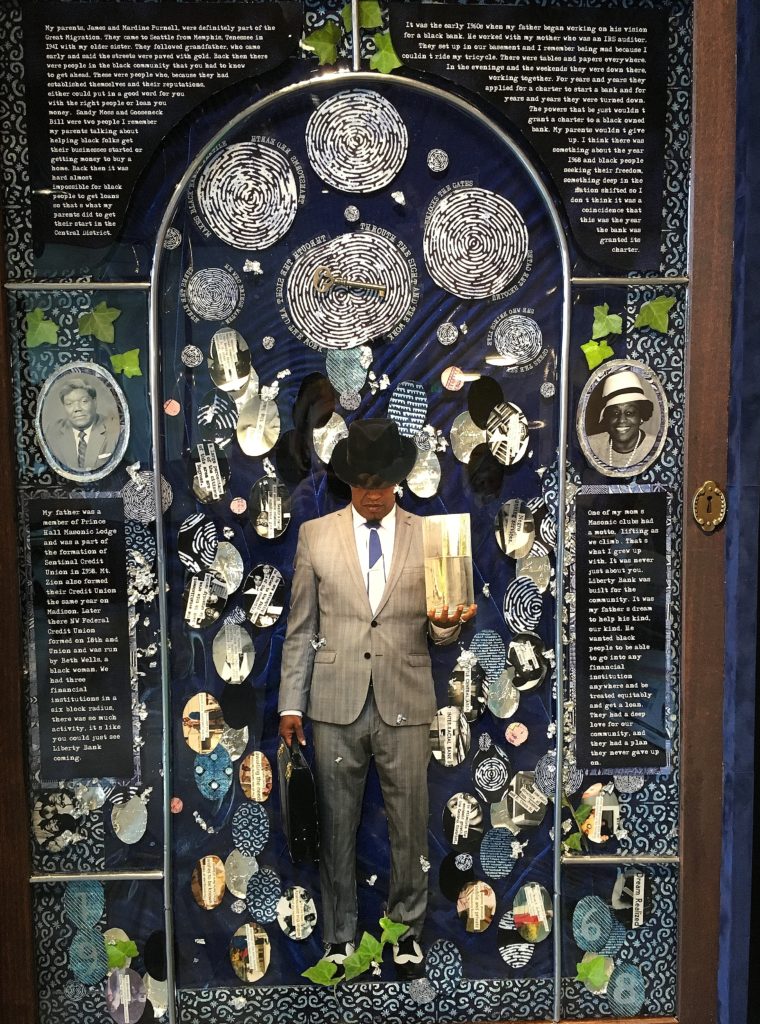
Next is the “The Black Earth,” the story of the founding of the Liberty Bank, black earth is rich in nutrients, that can nourish a community. The nourishment came from the founding of the Liberty Bank, and the story is told by the daughter of the founders, James and Mardine Purnell, whose photographs you see. Credit Unions preceded the bank in the 1950s and in 1968 the Purnells and seven strong community members came together to create the bank. We see James Purnell carrying a jug of water against a blue background that also suggests flowing water. The details of the process and deeds of sale are in the rain drops.
“The Black Earth – A more direct retelling of the founding of Liberty Bank, this panel uses the metaphor of black soil as a symbol of fertility. It evokes the bringing of water as a catalyzing force activating soil that has been prepared for cultivation and connects this to the Purnells’ mission to establish a bank that would bring much needed resource to the community African Americans were actively building in the central district. “
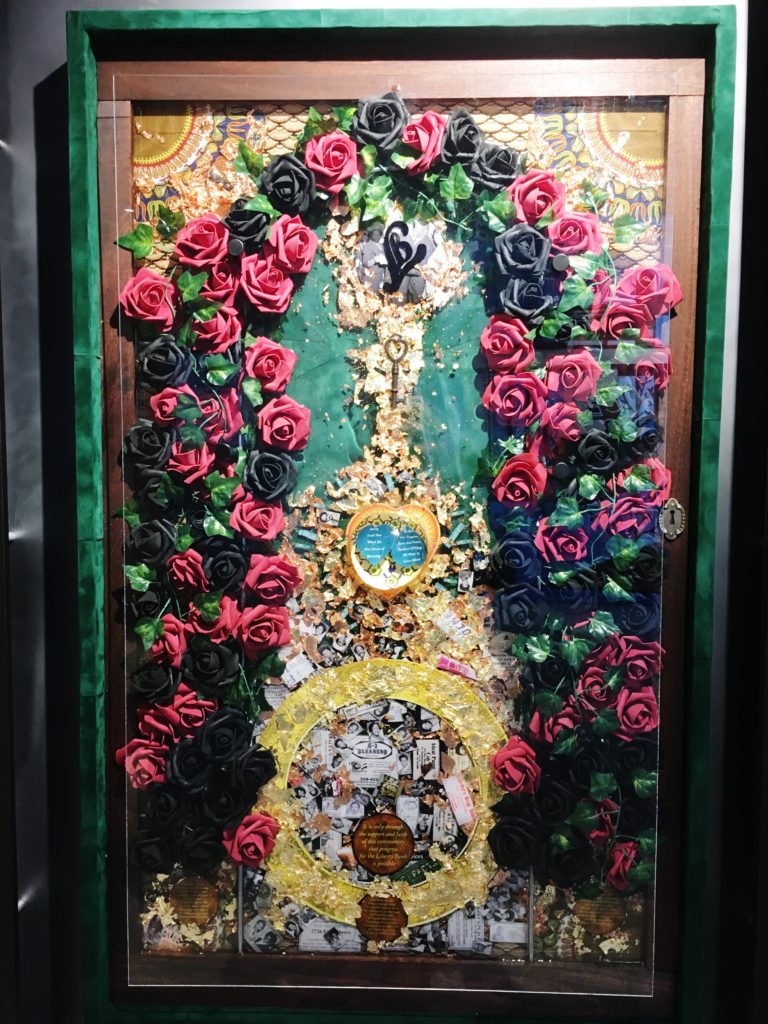
Next is The Green Earth which does not have a central figure. It embodies a coherent community, more abstract and more chaotic, with its roses and a gold wreath at the bottom, and a collage of photographs of events and people of the community.
“The Green Earth – A visual allegory for earth that is fertile and bountiful. It evokes the African American community in the Central District at its height and centers Liberty Bank’s role in that story. This panel is all about the complexity of a living social ecosystem. ”
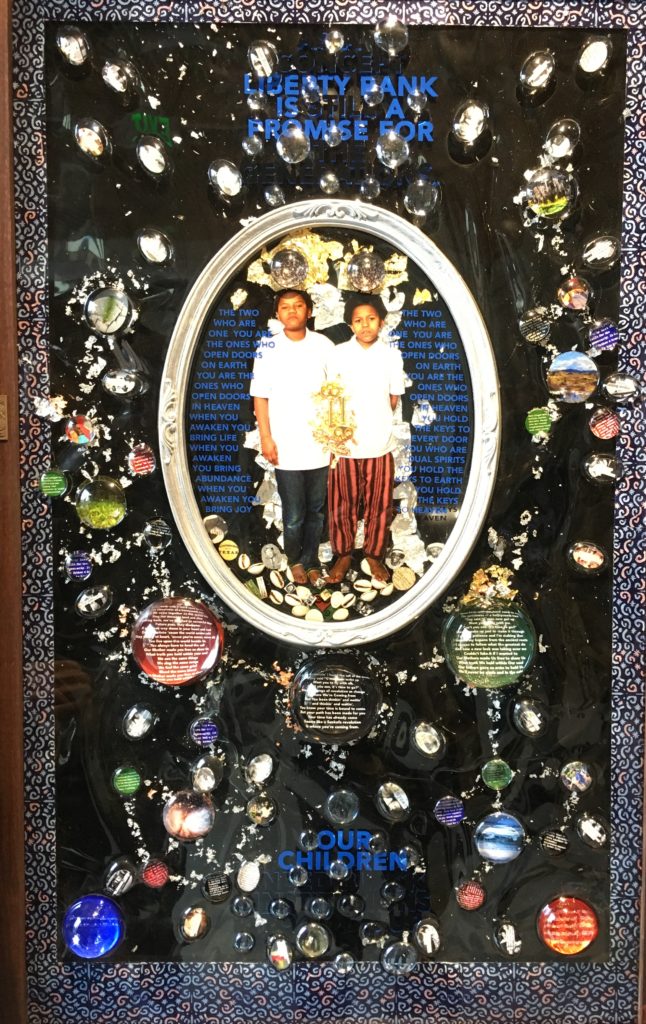
Last is The Infinite Earth . We see twins who will carry on the legacy of the bank, there are references to music, Sankofa, abundance, fertility, birth. Looking hard we can see photographs of Civil Rights Leaders like Malcolm X, and even photographs from the Hubble telescope inserted into some of the bubbles. It includes all the elements and the solar system. The cowrie shells refer to both currancy and abundance.
“The Infinite Earth – The panel explores the possibilities of the future by anchoring that potential in learning from the best that our collective past has to tell use. It evokes themes of transformation, endurance, connectedness, communal love, service, and vision as the heart of the of Liberty Bank story. “